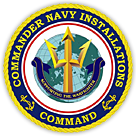| Commander, Navy Region Southeast Navy Region Southeast | |
|---|---|
 Command insignia of Navy Region Southeast | |
| Active | Various Commands:1942 - 1999 As CNRSE:1999 - present |
| Country | |
| Branch | |
| Type | Region Commander |
| Role | Management of naval installations in the Southeastern United States |
| Part of | Naval Installations Command |
| HQ | Naval Air Station Jacksonville, Florida |
| Nickname(s) | CNRSE |
| Motto(s) | "Where the Atlantic Fleet and the Navy's Air Training Command come to train." |
| Website | cnrse.cnic.navy.mil Leadership |
| Commanders | |
| Current commander | RDML John W. Hewitt |
Navy Region Southeast (NAVREGSE or CNRSE) is one of eleven current naval regions responsible to Commander, Navy Installations Command for the operation and management of Naval shore installations in Kansas, Oklahoma, Texas, Missouri, Arkansas, Louisiana, Tennessee, Mississippi, Alabama, Georgia, Florida, and South Carolina. It is headquartered onboard Naval Air Station Jacksonville, in Jacksonville, Duval County, Florida.
Contents
CNRSE's motto is "Where the Atlantic Fleet and the Navy's Air Training Command come to train", It gets this motto from the fact that its installations are home to both the Naval Air Training Command located at Naval Air Station Corpus Christi and Naval Education and Training Command, which has its headquarters at Naval Air Station Pensacola. The region's installations also host the United States Navy Flight Exhibition Team, more commonly known as the Blue Angels, which for a brief stint in the late 1940s were under what was then the Naval Air Advanced Training Command.

